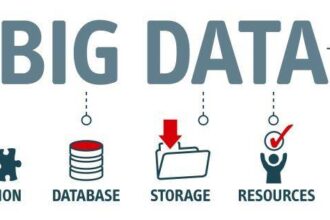We all know it’s true. As undeniable as John McEnroe’s temper, John Mayer’s witty charm and Johnny Depp’s eccentricity.
We all know it’s true. As undeniable as John McEnroe’s temper, John Mayer’s witty charm and Johnny Depp’s eccentricity.
We all know that the key metric for measuring Business Intelligence (BI) performance is the rate of end-user adoption. That is, the number of people within an organization who have access to and regularly use the reports generated by their reporting and analytics solution, to make sound business decisions.
Why should user adoption be the definitive measure for effective BI? Because like any product or service, if it’s used regularly, it successfully performs a desired function or satisfies a particular need – it’s useful. If not, it represents wasted resources.
Furthermore, in the case of BI, widespread user adoption results in fast and extensive knowledge sharing and data analysis, and therefore, the ability to act on the insights gained from reporting and analytics in shorter timeframes to capitalize on marketplace opportunities. Extensive user adoption delivers outstanding return on investment (ROI) for BI projects and fulfills BI’s purpose – to place timely fact-based information in the hands of decision-makers.
So, to help you avoid the common pitfalls, here are the top ten reasons why organizations fail to achieve widespread user adoption for their BI projects:
1. The total cost of BI software is too expensive for mass deployment: The complexity, inflexibility and expensive of traditional BI tools and licensing arrangements inhibits user adoption. Under these conditions, only select power users gain access to the reporting tool because the cost and additional infrastructure required for mass rollout is unrealistic.
2. The BI tool is hard for non-technical business users to use independently: If business users view the BI tool as a burden and hindrance to productivity it will remain shelf-ware.
3. The BI tool doesn’t help the right people to do their jobs better: The BI tool must help deliver the right information to the right people.
4. The data is not updated with sufficient frequency: Without regular data updates your BI tool will produce inaccurate information, leading to inaccurate business decisions. Executive backing and usage rates will quickly decline.
5. The right data is not collected: If you fail to collect the data needed to support operational objectives your BI tool will produce irrelevant reports. The tool itself will be viewed as irrelevant.
6. Lack of BI technical expertise and training for IT department: If your IT department lacks the necessary training to properly administer and oversee your BI project, it’s game over.
7. IT personnel cannot support excessive business user demands: If the tool cannot support business user self-service, your IT department will be overrun by ongoing support requests.
8. Not knowing how or what to apply BI to (lack of best practices): If you don’t know what business functions to measure, a BI tool is useless.
9. Lack of training for end users: If users don’t understand how to use the BI tool, the underlying data, or data analysis generated by the BI tool to improve their performance, they wont.
10. Lack of executive or managerial support: Poor planning and a poorly defined business case will destroy the necessary financial backing for a large-scale rollout.
So, what are the key drivers of end-user adoption in the BI space?
Well, there are two main areas of focus – timely access to relevant data and platform capability.
Access to data includes:
- Report relevance: Do their reports help them to succeed?
- Exception-based reporting: Help users get to the issue immediately
- Timeliness of data delivery: Agility and flexibility of your BI solution
- Data quality: How accurate and clean is your data?
- Training: How well prepared are your end-users to use your BI solution?
Platform capability includes:
- Ease-of-use: Make sure technology does not get in the way
- Interactivity: Flexibility to explore, manipulate and analyze reports
- Speed of report delivery: No one wants an excessive wait for their report to run. Five seconds max is a good benchmark on the web.
- Security: Feel confident that confidential data will be secure
- Anywhere, anytime access: Mobile BI and report scheduling is a must
It’s simple. The more employees who have access to the benefits of quality BI, the better equipped any organization will be to respond to, and take advantage of, opportunities and shifts in their business environment.
And the more barriers that are removed to widespread end-user adoption, the more able an organization will be to incorporate and ingrain a BI application into its business culture.







